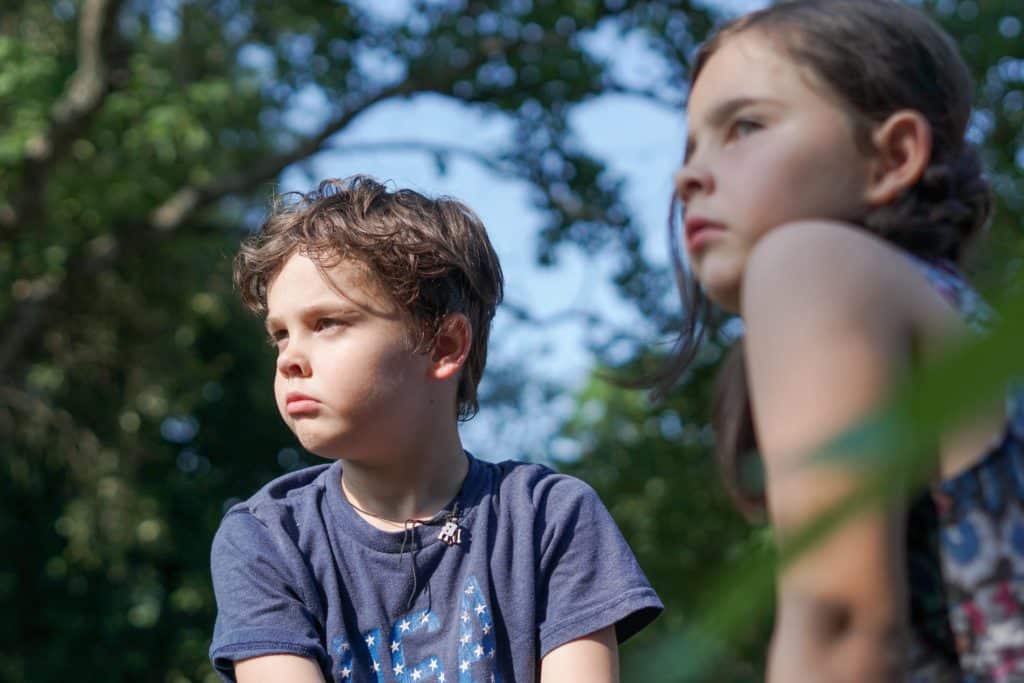Written by Madison Pope, Senior Advocacy Liaison, and Suzanne Severance, Senior Advocacy Supervisor
Our core values at Voices for Children begin with, “We cherish children and put them first, always.” The volunteers who choose to serve as Court Appointed Special Advocates (CASAs) for children who have experienced abuse and neglect continually demonstrate this value. When a child displays challenging behaviors, the priority we place on their well-being drives us to listen, learn, and seek to understand, even when it can be extremely difficult to know how to respond appropriately. Tantrums, hitting, and general misbehavior are tough issues that many parents deal with, but these issues can be even more prevalent for children in the foster care system. To understand why, and to break down myths about the behavior of children in foster care, we must take a deeper look at the way the brain develops in childhood.
 Brain development is particularly important in early years when essential neuron connections, known as synapses, are still developing. Based on experience and reinforcement, these connections are either strengthened or shed in a natural elimination process called pruning1. Neural pathways that are used frequently are reinforced, while pathways that go unused are shed. Trauma directly impacts brain development as it increases the risk that a child’s brain will prune vital synapses that an otherwise healthy developing brain would strengthen. Instead, the neural pathways that strengthen are those that provide coping mechanisms to endure the child’s specific stressful or dangerous environment.
Brain development is particularly important in early years when essential neuron connections, known as synapses, are still developing. Based on experience and reinforcement, these connections are either strengthened or shed in a natural elimination process called pruning1. Neural pathways that are used frequently are reinforced, while pathways that go unused are shed. Trauma directly impacts brain development as it increases the risk that a child’s brain will prune vital synapses that an otherwise healthy developing brain would strengthen. Instead, the neural pathways that strengthen are those that provide coping mechanisms to endure the child’s specific stressful or dangerous environment.
While the nature and severity varies, children in foster care have all experienced some sort of trauma or adversity. These circumstance-specific tools can carry over to other environments where they may no longer be needed. For instance, a child who comes from a home where they have been neglected might throw a tantrum to get what they want. Though their current caregivers are meeting all of their needs, their brain has likely learned that kicking and screaming is how to effectively get their needs met. Despite their current safe environment, a child with a history of trauma can be more likely to struggle with self-regulation, lack impulse control, behave defiantly, and lack the foresight of the consequences for their actions2. What was once a necessary behavior to survive may now be a very unnecessary, yet persistent, pattern.
The good news is that children are wonderfully resilient. Research has shown that children’s brains can be rewired as they experience consistent, ongoing support from positive adult relationships3. Fortunately for the children in San Diego and Riverside Counties’ foster care systems, CASA volunteers can be that consistent, positive adult in their lives, showing patience and providing advocacy. Often times, youth in dependency expect the adults in their lives to come and go, and therefore, are unable to develop trust or make significant progress in correcting their behavioral issues. A CASA can prove to the child that they are going to be a consistent, reliable person who will continue to return no matter how they behave.
Tips for CASAs Regarding Challenging Behaviors:
If a youth is misbehaving during an outing, CASAs should always maintain safety, do what they can to keep calm, acknowledge the child’s emotions, and listen if the child is open to talking. Providing a calm, safe space can go a long way in reducing the problematic behavior. CASAs can also have a conversation about safety and behavioral expectations at a later time when the child has calmed down. CASAs can advocate by ensuring their assigned youth is connected to behavioral or developmental services that may be appropriate for them, and by speaking to those professionals about any concerns.
CASAs can also encourage self-esteem through positive experiences, which promote resiliency. One way to do this is by finding an activity that the child enjoys and is good at. Mastering a sport, instrument, or skill can dramatically impact a child’s self-esteem, and in turn improve their behavior. It is also beneficial to allow the youth to make age-appropriate choices, thereby promoting a feeling of control.3 Finally, one of the best and perhaps most important services a CASA can provide their youth is giving them the space and time to have fun. Fun promotes imagination and can spark a sense of hope. CASAs have the opportunity to create happy, normal, fun memories with a child which allow them to be present in the moment and more hopeful for their future. If a CASA has any questions or concerns in dealing with challenging behavior, they should reach out to their advocacy supervisor for more guidance that is specific to their case.
Learn How You Can Become A CASA Volunteer
There are children in the San Diego and Riverside County foster care systems that could greatly benefit from the consistency and support a CASA provides. Through no fault of their own, these youth have been abused and neglected and need a caring adult, like you, to support them as they face the effects of the trauma they experienced. To learn more about how you can become a CASA volunteer and positively impact the life of a child, please visit our volunteer page to get started on your CASA journey.
References
1Mercy Home For Boys & Girls; Trauma and Brain Development in Children.
2The National Child Traumatic Stress Network; What is Child Trauma? – Effects
3Children’s Bureau; Helping Youth Transition to Adulthood: Guidance for Foster Parents
